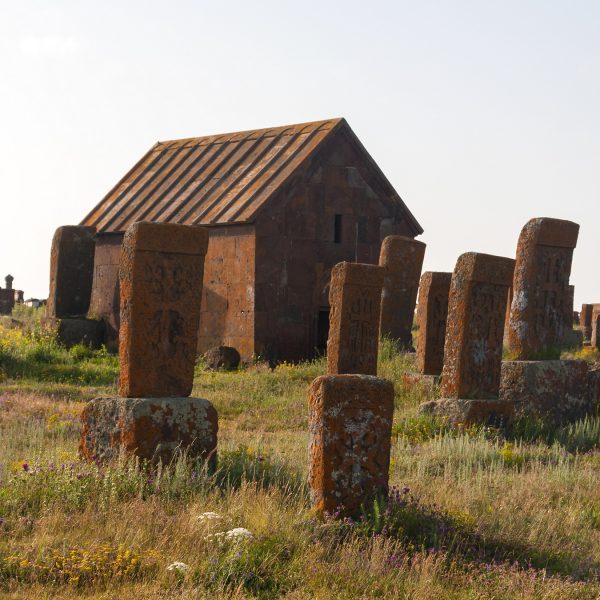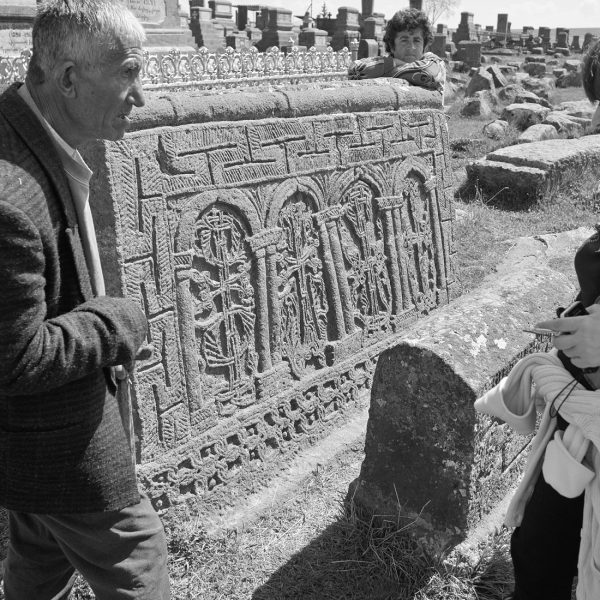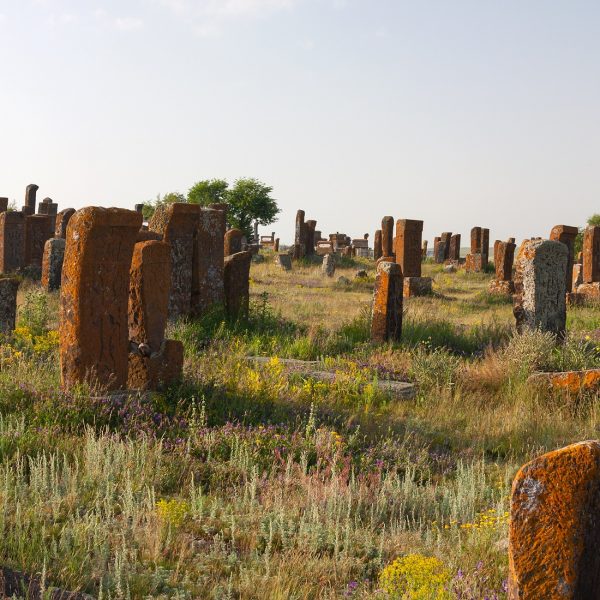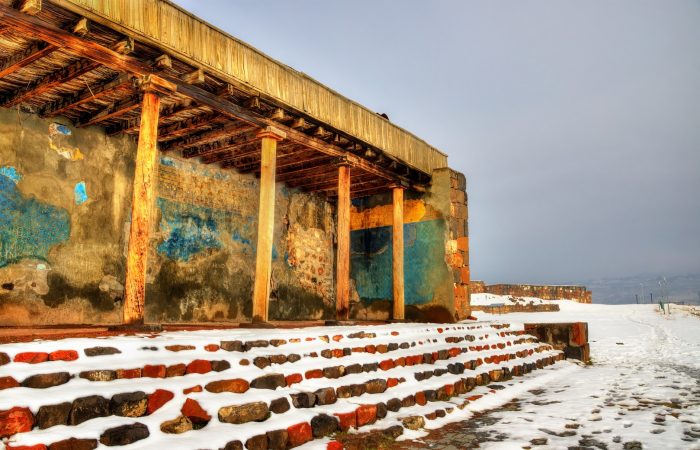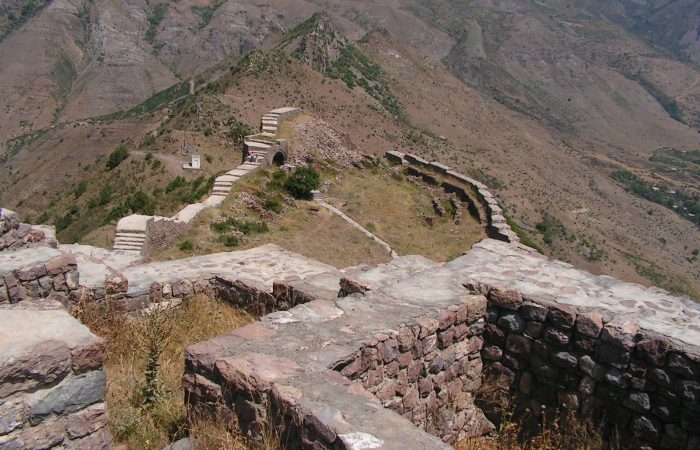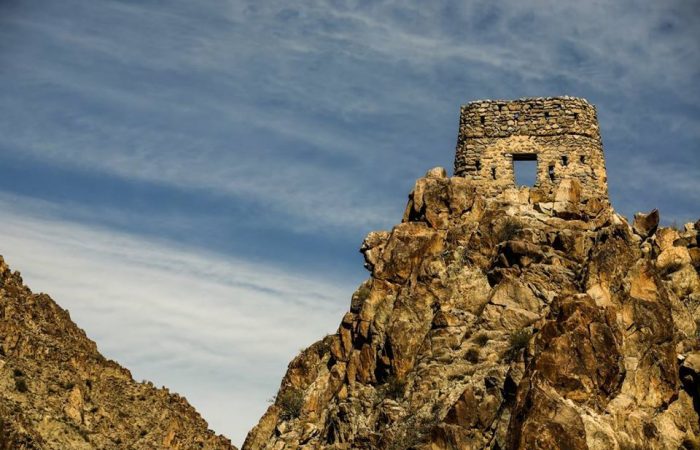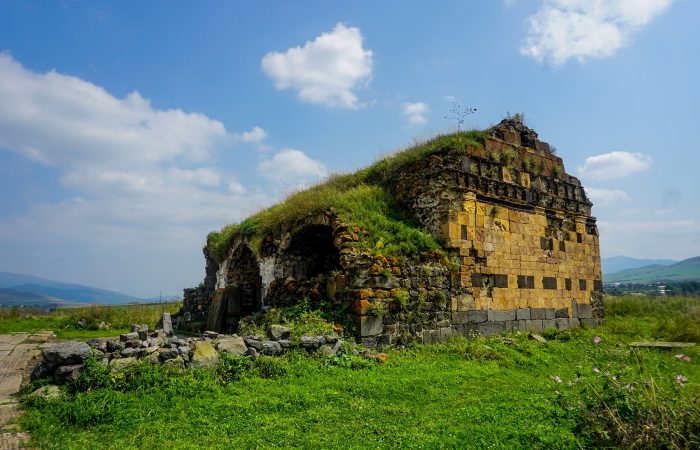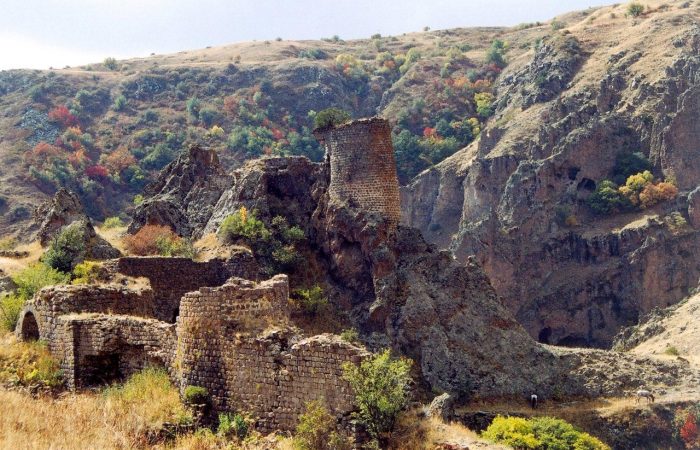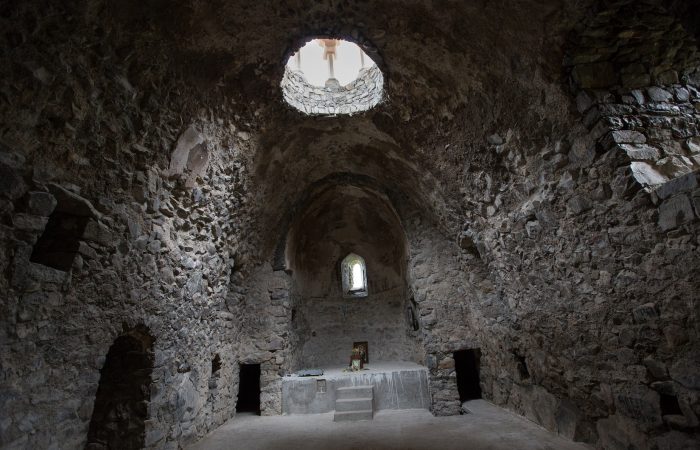Noratus Khatchkar Field: General and Location
Noratus is an old settlement sheltering numerous monuments dating to the Bronze and Iron Ages. Noratus was once considered to be a village-town. The preserved medieval structures date to the 9th-17th centuries. In the 13th-14th centuries Noratus belonged to Zakaryans and was their administrative center. The settlement is located in Gegharkunik Province, close to the city of Gavar. The distance between Noratus and capital Yerevan is 95 kilometers and it takes 1.5 hours to get there. On your way to or back from the settlement you can pay a visit to the beautiful Lake Sevan and Lchashen archaeological site.
Noratus Khatchkar Field: Naming
It is assumed that Noratus is the same fortress-county town of Gegharkunik built by Gegham Nahapet (Patriarch) who comes from the line of Hayk, who is believed to be the forefather of the Armenian people. Gegham Nahapet is thought to have named the fortress-county town “Noratuns” meaning “new houses.”
Noratus Khatchkar Field: Cemetery
The oldest part of Noratus cemetery used to include 800 khatchkars dating to the 9th-17th centuries. The khatchkars greatly vary, and it is explained by the development period of khatchkar art. Three main periods are distinguished – 9th-10th centuries, 11th-12th centuries and 13th-16th centuries.
Noratus is the second largest cemetery. The first is the cemetery of Julfa located in Nakhijevan. The khatchkars of Julfa the number of which once reached 2500 were ruined and destroyed within 1998-2005 by Azerbaijanis. Khatchkars of Julfa can be found in the yard of Ejmiatsin Holy Mother Cathedral. After the cemetery of Julfa was destroyed Noratus came to be the largest khatchkar complex in the world.
As you walk in the cemetery you will see various types of khatchkars and tombstones. It should be noted that placing and erecting tombstones is a custom that was established in Armenia only in the 1st-2nd centuries. They were initially flat and rectangular slabs. Later on the cradle-like tombstones became rather wide-spread. They usually included carvings depicting the preferences or the activities of the dead person. For example, the nobleman is depicted in a hunting scene, the musician with his instrument and so on.
Of interest is the western part of the cemetery where the burials were performed based on the family name.
Noratus Khatchkar Field: Legend
There are various legends regarding Noratus, and one of them recounts the invasions of Ottoman Turks to the province of Gegharkunik and their fight against Prince Gegham.
Gegham greatly lacked forces and so he ordered his soldiers to wear military outfit on the khatchkars and cause the enemy to think that there is a powerful army in a large number waiting for them. The Turks were terrified at the sight and fled. Taking advantage of this Prince Gegham attacked them and defeated the enemy.
Noratus Khatchkar Field: Other Things to See In/Around the Settlement
Saint Astvatsatsin Church – Saint Astvatsatsin (Holy Mother) Church is located in the center of the village. Currently in a ruined state it was built in the 9th century by Sahak, Prince of Gegharkunik. The church has a domed hall. There are various khatchkars and tombstones in the church-yard. The oldest inscription is carved on a cross-stone dating to 996. This khatchkar is presently in the History Museum of Armenia. An inscription on the southern wall of the church states that the locals were released from paying taxes.
Saint Grigor Monastery – The monastery is located in the southern part of the village. The monastery dates to the 13th century but the inscriptions and the art of construction allow to conclude the building of the church was erected before the 10th century. On the western wall of the monastery there is the inscription of Prince Herakl Havnuni. According to Catholicos Simeon Erevantsi, the monastery was once called a convent.
Chapel – The chapel is located to the north-east of the village. Only the lower rows of the church walls are preserved. The western wall includes khatchkars, while around the church-yard there are the ruins of cells. The oldest part of the church dates to the 13th century, while the oldest inscription to the 16th century, more precisely to 1560.
Lastly, as noted in the beginning it’s more preferable if you visit Noratus with a skillful guide, but even if you don’t and are lucky to meet local kids or elderly people, they will happily introduce you to this awesome khatchkar field you will never ever see in any other place.

